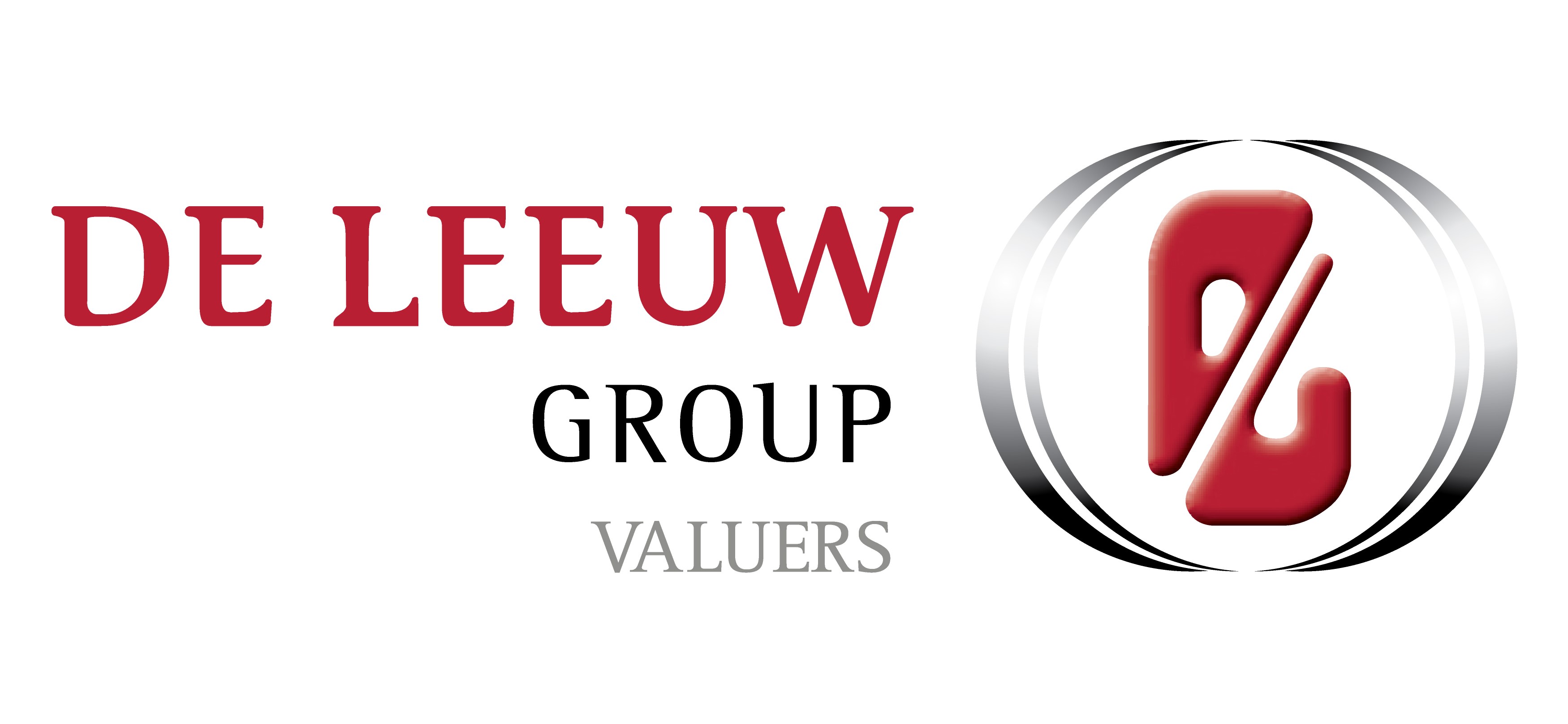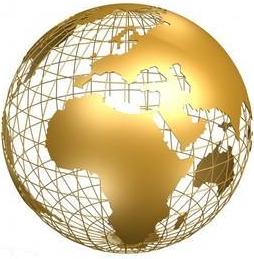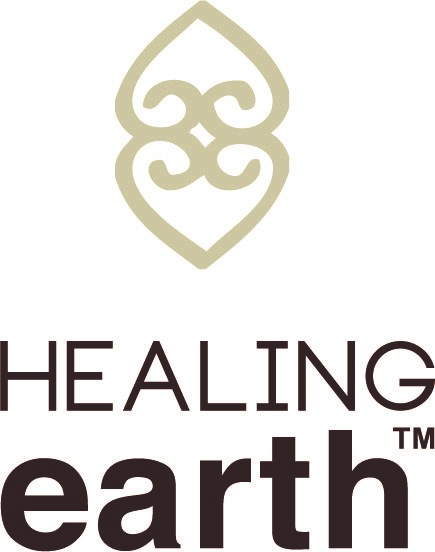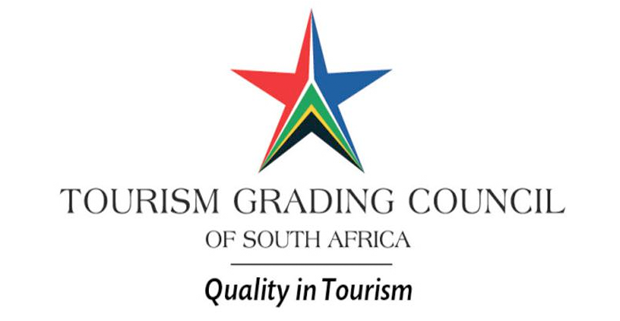








































































About Us
In the heart of the Garden Route, we have built an hotel that offers luxury and comfort unlike ever before. Overlooking the Magnificent Indian Ocean and complemented by the natural beauty of the harbor town of Mossel Bay, our hotel & spa offers guests 49 pristine rooms and suites as they explore the region.
The hotel itself is built right on the rocks and features South Africa's biggest natural tidal pool for you to enjoy with your friends, family and loved ones. If you look closely enough, you may even spot a Humpback Whale or a school of Dolphins right from the comfort of your own balcony.
We strive to provide world-class Hospitality to our guests. This is why not only is our Hotel Wheelchair-Accessible but also provides facilities such as WiFi Hotspots, direct dial telephones, international plug points and more.
Whether you seek a new adventure or simply a relaxing abode to call home, our hotel offers the perfect getaway for your next vacation.
Accommodation
All guest rooms at our hotel are equipped with air conditioning, a wardrobe, a safe and electric kettle. The modern bathrooms provide free toiletries. Guests can enjoy views of the ocean and South Africa's Biggest Tidal Pool.
Ocean View (Family) Suite
This inter-leading family room offers stunning views of the turquoise Indian Ocean. Unwind in the spacious bedroom or lie in the sun on your private patio overlooking the sea. Private en-suite bathroom with a shower.
Ocean View Standard Twin/Double Room
This inter-leading family room offers stunning views of the turquoise Indian Ocean. Unwind in the spacious bedroom or lie in the sun on your private patio overlooking the sea. Private en-suite bathroom with a shower.
Ocean View Standard Room
This inter-leading family room offers stunning views of the turquoise Indian Ocean. Unwind in the spacious bedroom or lie in the sun on your private patio overlooking the sea. Private en-suite bathroom with a shower.
Ocean View Family Double Room
This inter-leading family room offers stunning views of the turquoise Indian Ocean. Unwind in the spacious bedroom or lie in the sun on your private patio overlooking the sea. Private en-suite bathroom with a shower.
Food and Beverages/Spa
BELOW THE LIGHTHOUSE RESTAURANT treats you with the lavish meals whereas NIRVANA SPA makes sure that you enjoy your stay with all the pampering.
Florence, Italy
Florence is a city in Central Italy and the capital city of the Tuscany region. It is the most populated city in Tuscany, with 383,084 inhabitants in 2013, and over 1,520,000 in its metropolitan area.
Florence was a centre of medieval European trade and finance and one of the wealthiest cities of that era. It is considered by many academics to have been the birthplace of the Renaissance, becoming a major artistic, cultural, commercial, political, economic and financial center. During this time, Florence rose to a position of enormous influence in Italy, Europe, and beyond. Its turbulent political history includes periods of rule by the powerful Medici family and numerous religious and republican revolutions. From 1865 to 1871 the city served as the capital of the Kingdom of Italy (established in 1861). The Florentine dialect forms the base of Standard Italian and it became the language of culture throughout Italy due to the prestige of the masterpieces by Dante Alighieri, Petrarch, Giovanni Boccaccio, Niccolò Machiavelli and Francesco Guicciardini.
The city attracts millions of tourists each year, and UNESCO declared the Historic Centre of Florence a World Heritage Site in 1982. The city is noted for its culture, Renaissance art and architecture and monuments. The city also contains numerous museums and art galleries, such as the Uffizi Gallery and the Palazzo Pitti, and still exerts an influence in the fields of art, culture and politics.[12] Due to Florence's artistic and architectural heritage, Forbes has ranked it as the most beautiful city in the world of 2010.
Florence plays an important role in Italian fashion, and is ranked in the top 15 fashion capitals of the world by Global Language Monitor; furthermore, it is a major national economic centre, as well as a tourist and industrial hub. It is the 4th richest Italian city.
History
In the 9th–8th century BC, the Etruscans formed the small settlement of Fiesole (Faesulae in Latin) This was destroyed by Lucius Cornelius Sulla in 80 BC, in reprisal for supporting the populares faction in Rome.[citation needed] The present city of Florence was established by Julius Caesar in 59 BC as a settlement for his veteran soldiers and was named originally Fluentia, owing to the fact that it was built between two rivers, which was later changed to Florentia ("flowering"). It was built in the style of an army camp with the main streets, the cardo and the decumanus, intersecting at the present Piazza della Repubblica. Situated along the Via Cassia, the main route between Rome and the north, and within the fertile valley of the Arno, the settlement quickly became an important commercial centre.
In centuries to come, the city experienced turbulent periods of Ostrogothic rule, during which the city was often troubled by warfare between the Ostrogoths and the Byzantines, which may have caused the population to fall to as few as 1,000 people. Peace returned under Lombard rule in the 6th century. Florence was conquered by Charlemagne in 774 and became part of the Duchy of Tuscany, with Lucca as capital. The population began to grow again and commerce prospered. In 854, Florence and Fiesole were united in one county.
Second millennium
Margrave Hugo chose Florence as his residency instead of Lucca at about 1000 AD. The Golden Age of Florentine art began around this time. In 1013, construction began on the Basilica di San Miniato al Monte. The exterior of the church was reworked in Romanesque style between 1059 and 1128. In 1100, Florence was a "commune", meaning a city state. The city's primary resource was the Arno river, providing power and access for the industry (mainly textile industry), and access to the Mediterranean sea for international trade. Another great source of strength was its industrious merchant community. The Florentine merchant banking skills became recognised in Europe after they brought decisive financial innovation (e.g. bills of exchange, double-entry bookkeeping system) to medieval fairs. This period also saw the eclipse of Florence's formerly powerful rival Pisa (defeated by Genoa in 1284 and subjugated by Florence in 1406), and the exercise of power by the mercantile elite following an anti-aristocratic movement, led by Giano della Bella, that resulted in a set of laws called the Ordinances of Justice (1293).
Middle Ages and Renaissance
At the height of demographic expansion around 1325, the urban population may have been as great as 120,000, and the rural population around the city was probably close to 300,000. The Black Death of 1348 reduced it by over half, about 25,000 are said to have been supported by the city's wool industry: in 1345 Florence was the scene of an attempted strike by wool combers (ciompi), who in 1378 rose up in a brief revolt against oligarchic rule in the Revolt of the Ciompi. After their suppression, Florence came under the sway (1382–1434) of the Albizzi family, who became bitter rivals of the Medici.
In the 15th century, Florence was among the largest cities in Europe, with a population of 60,000, and was considered rich and economically successful. Cosimo de' Medici was the first Medici family member to essentially control the city from behind the scenes. Although the city was technically a democracy of sorts, his power came from a vast patronage network along with his alliance to the new immigrants, the gente nuova (new people). The fact that the Medici were bankers to the pope also contributed to their ascendancy. Cosimo was succeeded by his son Piero, who was, soon after, succeeded by Cosimo's grandson, Lorenzo in 1469. Lorenzo was a great patron of the arts, commissioning works by Michelangelo, Leonardo da Vinci and Botticelli. Lorenzo was an accomplished poet and musician and brought composers and singers to Florence, including Alexander Agricola, Johannes Ghiselin, and Heinrich Isaac. By contemporary Florentines (and since), he was known as "Lorenzo the Magnificent" (Lorenzo il Magnifico).
Following Lorenzo de' Medici's death in 1492, he was succeeded by his son Piero II. When the French king Charles VIII invaded northern Italy, Piero II chose to resist his army. But when he realised the size of the French army at the gates of Pisa, he had to accept the humiliating conditions of the French king. These made the Florentines rebel, and they expelled Piero II. With his exile in 1494, the first period of Medici rule ended with the restoration of a republican government.
Savonarola, Machiavelli, and the Medici popes
During this period, the Dominican friar Girolamo Savonarola had become prior of the San Marco monastery in 1490. He was famed for his penitential sermons, lambasting what he viewed as widespread immorality and attachment to material riches. He praised the exile of the Medici as the work of God, punishing them for their decadence. He seized the opportunity to carry through political reforms leading to a more democratic rule. But when Savonarola publicly accused Pope Alexander VI of corruption, he was banned from speaking in public. When he broke this ban, he was excommunicated. The Florentines, tired of his teachings, turned against him and arrested him. He was convicted as a heretic, hung and burned at the stake on the Piazza della Signoria on 23 May 1498. His ashes were dispersed in the Arno river.
Another Florentine of this period with famously acute insight was Niccolò Machiavelli, whose prescriptions for Florence's regeneration under strong leadership have often been seen as a legitimization of political expediency and even malpractice. Machiavelli was a political thinker, renowned for his political handbook The Prince, which is about ruling and exercising power. Commissioned by the Medici, Machiavelli also wrote the Florentine Histories, the history of the city.
In 1512, the Medici retook control of Florence with the help of Spanish and Papal troops.[27] They were led by two cousins, Giovanni and Giulio de' Medici, both of whom would later become Popes of the Catholic Church, (Leo X and Clement VII, respectively). Both were generous patrons of the arts, commissioning works like Michelangelo's Laurentian Library and Medici Chapel in Florence, to name just two.[28][29] Their reigns coincided with political upheaval in Italy, and thus in 1527, Florentines drove out the Medici for a second time and re-established a theocratic republic on 16 May 1527, (Jesus Christ was named King of Florence).[30] The Medici returned to power in Florence in 1530, with the armies of Holy Roman Emperor Charles V and the blessings of Pope Clement VII (Giulio de' Medici).
Florence officially became a monarchy in 1531, when Emperor Charles and Pope Clement named Alessandro de Medici as Duke of the Florentine Republic. The Medici's monarchy would last over two centuries. Alessandro's successor, Cosimo I de Medici, was named Grand Dukes of Tuscany in 1569; in all Tuscany, only the Republic of Lucca (later a Duchy) and the Principality of Piombino were independent from Florence.
18th and 19th centuries
The extinction of the Medici dynasty and the accession in 1737 of Francis Stephen, duke of Lorraine and husband of Maria Theresa of Austria, led to Tuscany's temporary inclusion in the territories of the Austrian crown. It became a secundogeniture of the Habsburg-Lorraine dynasty, who were deposed for the House of Bourbon-Parma in 1801. From 1801 to 1807 Florence was the capital of the Napoleonic client state Kingdom of Etruria. The Bourbon-Parma were deposed in December 1807 when Tuscany was annexed by France. Florence was the prefecture of the French département of Arno from 1808 to the fall of Napoleon in 1814. The Habsburg-Lorraine dynasty was restored on the throne of Tuscany at the Congress of Vienna but finally deposed in 1859. Tuscany became a region of the Kingdom of Italy in 1861.
Florence replaced Turin as Italy's capital in 1865 and, in an effort to modernise the city, the old market in the Piazza del Mercato Vecchio and many medieval houses were pulled down and replaced by a more formal street plan with newer houses. The Piazza (first renamed Piazza Vittorio Emanuele II, then Piazza della Repubblica, the present name) was significantly widened and a large triumphal arch was constructed at the west end. This development was unpopular and was prevented from continuing by the efforts of several British and American people living in the city. A museum recording the destruction stands nearby today.
The country's second capital city was superseded by Rome six years later, after the withdrawal of the French troops allowed the capture of Rome.
20th century
During World War II the city experienced a year-long German occupation (1943–1944) being part of the Italian Social Republic. Hitler declared it an open city on 3 July 1944 as troops of the British 8th Army closed in. In early August, the retreating Germans decided to demolish all the bridges along the Arno linking the district of Oltrarno to the rest of the city, making it difficult for troops of the 8th Army to cross. However, at the last moment Charles Steinhauslin, at the time consul of 26 countries in Florence, convinced the German general in Italy that the Ponte Vecchio was not to be destroyed due to its historical value.[citation needed] Instead, an equally historic area of streets directly to the south of the bridge, including part of the Corridoio Vasariano, was destroyed using mines. Since then the bridges have been restored to their original forms using as many of the remaining materials as possible, but the buildings surrounding the Ponte Vecchio have been rebuilt in a style combining the old with modern design. Shortly before leaving Florence, as they knew that they would soon have to retreat, the Germans executed many freedom fighters and political opponents publicly, in streets and squares including the Piazza Santo Spirito.
Florence was liberated by New Zealand, South African and British troops on 4 August 1944 alongside partisans from the Tuscan Committee of National Liberation (CTLN). The Allied soldiers who died driving the Germans from Tuscany are buried in cemeteries outside the city (Americans about nine kilometres or 5+1⁄2 miles south of the city, British and Commonwealth soldiers a few kilometres east of the centre on the right bank of the Arno).
At the end of World War II in May 1945, the US Army's Information and Educational Branch was ordered to establish an overseas university campus for demobilised American service men and women in Florence, Italy. The first American university for service personnel was established in June 1945 at the School of Aeronautics in Florence, Italy. Some 7,500 soldier-students were to pass through the university during its four one-month sessions (see G. I. American Universities).
In November 1966, the Arno flooded parts of the centre, damaging many art treasures. Around the city there are tiny placards on the walls noting where the flood waters reached at their highest point.
Geography
Florence lies in a basin formed by the hills of Careggi, Fiesole, Settignano, Arcetri, Poggio Imperiale and Bellosguardo (Florence). The Arno river, three other minor rivers (Mugnone, Ema and Greve) and some streams flow through it.
Climate
Florence has a humid subtropical climate (Cfa), tending to Mediterranean (Csa). It has hot summers with moderate or light rainfall and cool, damp winters. As Florence lacks a prevailing wind, summer temperatures are higher than along the coast. Rainfall in summer is convectional, while relief rainfall dominates in the winter. Snow flurries occur almost every year, but often result in no accumulation. The highest officially recorded temperature was 42.6 °C (108.7 °F) on 26 July 1983 and the lowest was −23.2 °C (−9.8 °F) on 12 January 1985.
Demographics
As of 31 October 2010, the population of the city proper is 370,702, while Eurostat estimates that 696,767 people live in the urban area of Florence. The Metropolitan Area of Florence, Prato and Pistoia, constituted in 2000 over an area of roughly 4,800 square kilometres (1,850 sq mi), is home to 1.5 million people. Within Florence proper, 46.8% of the population was male in 2007 and 53.2% were female. Minors (children aged 18 and less) totalled 14.10 percent of the population compared to pensioners, who numbered 25.95 percent. This compares with the Italian average of 18.06 percent (minors) and 19.94 percent (pensioners). The average age of Florence resident is 49 compared to the Italian average of 42. In the five years between 2002 and 2007, the population of Florence grew by 3.22 percent, while Italy as a whole grew by 3.56 percent.[53] The birth rate of Florence is 7.66 births per 1,000 inhabitants compared to the Italian average of 9.45 births.
As of 2009, 87.46% of the population was Italian. An estimated 6,000 Chinese live in the city. The largest immigrant group came from other European countries (mostly Romanians and Albanians): 3.52%, East Asia (mostly Chinese and Filipino): 2.17%, the Americas: 1.41%, and North Africa (mostly Moroccan): 0.9%.
Much like the rest of Italy most of the people in Florence are Roman Catholic, with more than 90% of the population belonging to the Archdiocese of Florence.
Economy
Tourism is, by far, the most important of all industries and most of the Florentine economy relies on the money generated by international arrivals and students studying in the city. The value tourism to the city totalled some €2.5 billion in 2015 and the number of visitors had increased by 5.5% from the previous year.
In 2013, Florence was listed as the second best world city by Condé Nast Traveler.
Manufacturing and commerce, however, still remain highly important. Florence is also Italy's 17th richest city in terms of average workers' earnings, with the figure being €23,265 (the overall city's income is €6,531,204,473), coming after Mantua, yet surpassing Bolzano.
Industry, commerce and services
Florence is a major production and commercial centre in Italy, where the Florentine industrial complexes in the suburbs produce all sorts of goods, from furniture, rubber goods, chemicals, and food. However, traditional and local products, such as antiques, handicrafts, glassware, leatherwork, art reproductions, jewellery, souvenirs, elaborate metal and iron-work, shoes, accessories and high fashion clothes also dominate a fair sector of Florence's economy. The city's income relies partially on services and commercial and cultural interests, such as annual fairs, theatrical and lyrical productions, art exhibitions, festivals and fashion shows, such as the Calcio Fiorentino. Heavy industry and machinery also take their part in providing an income. In Nuovo Pignone, numerous factories are still present, and small-to medium industrial businesses are dominant. The Florence-Prato-Pistoia industrial districts and areas were known as the 'Third Italy' in the 1990s, due to the exports of high-quality goods and automobile (especially the Vespa) and the prosperity and productivity of the Florentine entrepreneurs. Some of these industries even rivalled the traditional industrial districts in Emilia-Romagna and Veneto due to high profits and productivity.
In the fourth quarter of 2015, manufacturing increased by 2.4% and exports increased by 7.2%. Leading sectors included mechanical engineering, fashion, pharmaceutics, food and wine. During 2015, permanent employment contracts increased by 48.8 percent, boosted by nationwide tax break.
Tourism
Tourism is the most significant industry in central Florence. From April to October, tourists outnumber local population. Tickets to the Uffizi and Accademia museums are regularly sold out and large groups regularly fill the basilicas of Santa Croce and Santa Maria Novella, both of which charge for entry. Tickets for The Uffizi and Accademia can be purchased online prior to visiting. In 2010, readers of Travel + Leisure magazine ranked the city as their third favourite tourist destination. In 2015, Condé Nast Travel readers voted Florence as the best city in Europe.
Studies by Euromonitor International have concluded that cultural and history-oriented tourism is generating significantly increased spending throughout Europe.
Florence is believed to have the greatest concentration of art (in proportion to its size) in the world. Thus, cultural tourism is particularly strong, with world-renowned museums such as the Uffizi selling over 1.93 million tickets in 2014.[66] The city's convention centre facilities were restructured during the 1990s and host exhibitions, conferences, meetings, social forums, concerts and other events all year.
In 2016, Florence had 20,588 hotel rooms in 570 facilities. International visitors use 75% of the rooms; some 18% of those were from the U.S. In 2014, the city had 8.5 million overnight stays. A Euromonitor report indicates that in 2015 the city ranked as the world's 36th most visited in the world, with over 4.95 million arrivals for the year.
Tourism brings revenue to Florence, but also creates certain problems. The Ponte Vecchio, The San Lorenzo Market and Santa Maria Novella are plagued by pickpockets. The province of Florence receives roughly 13 million visitors per year and in peak seasons, popular locations may become overcrowded as a result. In 2015, Mayor Dario Nardella expressed concern over visitors who arrive on buses, stay only a few hours, spend little money but contribute significantly to overcrowding. "No museum visit, just a photo from the square, the bus back and then on to Venice... We don’t want tourists like that," he said.
Some tourists are less than respectful of the city's cultural heritage, according to Nardella. In June 2017, he instituted a programme of spraying church steps with water to prevent tourists from using such areas as picnic spots. While he values the benefits of tourism, he claims that there has been "an increase among those who sit down on church steps, eat their food and leave rubbish strewn on them," he explained. To boost the sale of traditional foods, the mayor had introduced legislation (enacted in 2016) that requires restaurants to use typical Tuscan products and rejected McDonald's application to open a location in the Piazza del Duomo.
In October 2021, Florence was shortlisted for the European Commission's 2022 European Capital of Smart Tourism award along with Bordeaux, Copenhagen, Dublin, Ljubljana, Palma de Mallorca and Valencia.
Food and wine production
Food and wine have long been an important staple of the economy. The Chianti region is just south of the city, and its Sangiovese grapes figure prominently not only in its Chianti Classico wines but also in many of the more recently developed Supertuscan blends. Within 32 km (20 mi) to the west is the Carmignano area, also home to flavourful sangiovese-based reds. The celebrated Chianti Rufina district, geographically and historically separated from the main Chianti region, is also few kilometres east of Florence. More recently, the Bolgheri region (about 150 km or 93 mi southwest of Florence) has become celebrated for its "Super Tuscan" reds such as Sassicaia and Ornellaia.
Culture
Art
Florence was the birthplace of High Renaissance art, which lasted from 1450 to 1527. While Medieval art focused on basic story telling of the Bible, Renaissance art focused on naturalism and human emotion. Medieval art was abstract, formulaic, and largely produced by monks whereas Renaissance art was rational, mathematical, individualistic, consisted of linear perspective and shading (Chiaroscuro) and produced by specialists (Leonardo da Vinci, Donatello, Michelangelo, and Raphael). Religion was important, but with this new age came the humanization of religious figures in art, such as Expulsion from the Garden of Eden, Ecce Homo (Bosch, 1470s), and Madonna Della Seggiola; People of this age began to understand themselves as human beings, which reflected in art. The Renaissance marked the rebirth of classical values in art and society as people studied the ancient masters of the Greco-Roman world; Art became focused on realism as opposed to idealism.
Cimabue and Giotto, the fathers of Italian painting, lived in Florence as well as Arnolfo and Andrea Pisano, renewers of architecture and sculpture; Brunelleschi, Donatello and Masaccio, forefathers of the Renaissance, Ghiberti and the Della Robbias, Filippo Lippi and Angelico; Botticelli, Paolo Uccello and the universal genius of Leonardo da Vinci and Michelangelo.
Their works, together with those of many other generations of artists, are gathered in the several museums of the town: the Uffizi Gallery, the Palatina gallery with the paintings of the "Golden Ages", the Bargello with the sculptures of the Renaissance, the museum of San Marco with Fra Angelico's works, the Academy, the chapels of the Medicis Buonarroti's house with the sculptures of Michelangelo, the following museums: Bardini, Horne, Stibbert, Romano, Corsini, The Gallery of Modern Art, the Museo dell'Opera del Duomo, the museum of Silverware and the museum of Precious Stones. Several monuments are located in Florence: the Florence Baptistery with its mosaics; the cathedral with its sculptures, the medieval churches with bands of frescoes; public as well as private palaces: Palazzo Vecchio, Palazzo Pitti, Palazzo Medici Riccardi, Palazzo Davanzati; monasteries, cloisters, refectories; the "Certosa". In the archaeological museum includes documents of Etruscan civilisation. In fact the city is so rich in art that some first time visitors experience the Stendhal syndrome as they encounter its art for the first time.
Florentine architects such as Filippo Brunelleschi (1377–1466) and Leon Battista Alberti (1404–1472) were among the fathers of both Renaissance and Neoclassical architecture.
The cathedral, topped by Brunelleschi's dome, dominates the Florentine skyline. The Florentines decided to start building it – late in the 13th century, without a design for the dome. The project proposed by Brunelleschi in the 14th century was the largest ever built at the time, and the first major dome built in Europe since the two great domes of Roman times – the Pantheon in Rome, and Hagia Sophia in Constantinople. The dome of Santa Maria del Fiore remains the largest brick construction of its kind in the world. In front of it is the medieval Baptistery. The two buildings incorporate in their decoration the transition from the Middle Ages to the Renaissance. In recent years, most of the important works of art from the two buildings – and from the nearby Giotto's Campanile, have been removed and replaced by copies. The originals are now housed in the Museum dell'Opera del Duomo, just to the east of the cathedral.
Florence has large numbers of art-filled churches, such as San Miniato al Monte, San Lorenzo, Santa Maria Novella, Santa Trinita, Santa Maria del Carmine, Santa Croce, Santo Spirito, the Annunziata, Ognissanti and numerous others.
Artists associated with Florence range from Arnolfo di Cambio and Cimabue to Giotto, Nanni di Banco, and Paolo Uccello; through Lorenzo Ghiberti, and Donatello and Massaccio and the della Robbia family; through Fra Angelico and Botticelli and Piero della Francesca, and on to Michelangelo and Leonardo da Vinci. Others include Benvenuto Cellini, Andrea del Sarto, Benozzo Gozzoli, Domenico Ghirlandaio, Filippo Lippi, Bernardo Buontalenti, Orcagna, Pollaiuolo, Filippino Lippi, Verrocchio, Bronzino, Desiderio da Settignano, Michelozzo, the Rossellis, the Sangallos, and Pontormo. Artists from other regions who worked in Florence include Raphael, Andrea Pisano, Giambologna, Il Sodoma and Peter Paul Rubens.
Cliff Jacobs (Nat Dpl Hotel Man (UJ). MPRE. GA Level 5 TEFL) Managing Principal / CEO Exquisite Hotel Consultants (Pty) Ltd Mobile: +27 (0) 84 413 1071 / +27 (0) 61 716 6951 Email: cliff@exquisitehotelconsultants.com Web: https://www.exquisitehotelconsultants.com © All rights reserved Terms and Conditions apply Scroll down to view our Hospitality Properties and Businesses for sale or lease or lease-to-buy or partnership arrangement or management agreement arrangement.



 Name: BondExcel
Name: BondExcel Mortgage Origination
We interface with all of the major banks in South Africa to ensure that you get the right home loan solution at the best possible rate.
Looking forward to assist you with your home loan application!
 Name: Businessentials For Hospitality
Name: Businessentials For Hospitality Hospitality Consulting, Accounting, Bookkeeping and Payroll Services
 Name: Capital Efficiency Group
Name: Capital Efficiency Group Corporate Finance, Tax & Accounting and Treasury Services.
Attorneys, Notaries and Conveyancers
 Name: D E I R D R E R E N N I E R S Interior Design
Name: D E I R D R E R E N N I E R S Interior Design Interior Design
 Name: De Leeuw Valuers Cape Town
Name: De Leeuw Valuers Cape Town Property Valuation Services
 Name: E C Mobility
Name: E C Mobility International property, law and immigration
 Name: Edward Tokolo Kasete
Name: Edward Tokolo Kasete Real Estate Specialist - Our Associate in Namibia
We offer an international platform of specialist hospitality property and/or business brokering services by listing and marketing for sale or lease or by investment partner arrangement or management agreement arrangement of a variety of hospitality products (i.e. hotels, resorts, boutique hotels, guest houses, guest lodges, B&Bs, game resorts, wine farms, yachts, cruise liners, etc) through our association with EC Mobility (in Portugal and Spain), BON Hotels (Africa), Giovanni Conti (Italy, North and East Africa, Sri Lanka), Nuno Boquinhas (Portugal, Azores, Madeira, Mozambique), Property 24, Seeff Property Services, Harcourts, Realnet, RE/MAX, Dogon Property Group, Rawson Estates, among many other prominent commercial estate agencies throughout Southern Africa - and now we are entering other African Countries on the East and West Coasts of Africa and moving further abroad! To date, Exquisite Hotel Consultants has a presence in over 80 countries - and counting...
Working with the above-mentioned agencies and others provides the largest possible reach nationally and internationally for all prospective buyers and sellers wishing to enter or exit the Hospitality Industry.
Sister websites have been opened in the following countries: United Kingdom: see www.exquisitehotelconsultants.co.uk, and in Germany: see www.exquisitehotelconsultants.de, and in the United States of America: see www.exquisitehotelconsultants.us.
Please note that several of our hospitality properties and/or businesses for sale or lease or through business partnership arrangements or management contracts are officially "Off-Market" - mainly for privacy reasons. Therefore, they are not listed as part of our hospitality properties/businesses for sale or lease stock. Please contact me for further details.
Should you be considering to sell or buy or lease or obtain a partnership arrangement or management agreement arrangement for your hotel, boutique hotel, resort, guest house, B&B, game lodge, game resort, guest farm, yacht or cruise liner etc, I would be most pleased to provide you with further details of our way of working to effectively market and sell your property(ies) and/or business(es).
 Name: Electrolux Professional
Name: Electrolux Professional Food Service, Beverage and Laundry Solutions
Electrolux Professional is a leading global provider of foodservice, beverage and laundry solutions, serving a wide range of customers globally, from restaurants and hotels to healthcare, educational and other service facilities.
 Name: Exquisite Hotel Consultants' Hospitality Training Department
Name: Exquisite Hotel Consultants' Hospitality Training Department Learn to speak Hotel English (one-to-one online course)
Our TEFL trained tutors teach the following functions
The course consists of 21 lessons (4 to 5 one-hour lessons per month).
 Name: FVE Interiors
Name: FVE Interiors Interior Design
 Name: Healing Earth
Name: Healing Earth Hotel Amenities - inspired by Africa
 Name: Hospro
Name: Hospro Hospitality Consultancy and Procurement
 Name: Hotel Revenue Management
Name: Hotel Revenue Management Revenue (yield) Management
Online room inventory Distribution & Rates optimisation
Implementation of Best Available Rate (BAR), in conjunction with point 1 & 2
 Name: Indigo Real Estate Agency
Name: Indigo Real Estate Agency Real Estate Agency - Our Associate in Mozambique
 Name: Lisa Dunn - Tourism Grading Assessor
Name: Lisa Dunn - Tourism Grading Assessor Tourism Grading Assessment
 Name: Ooba (Pty) Ltd
Name: Ooba (Pty) Ltd Mortgage Origination
ooba offers you:
 Name: SK Sambu Tours & Transfers
Name: SK Sambu Tours & Transfers Johannesburg based Tours & Transfers Operator
We look forward to being of service to you.
Kind regards
King Sambu
 Name: Soul Private Collection
Name: Soul Private Collection Hotel Management and Marketing
 Name: The Dumb Butler Hospitality Suppliers
Name: The Dumb Butler Hospitality Suppliers Hotel Linen Suppliers
LUX Award Winners 2021 for The Best Hospitality Suppliers. We are a proudly South African brand established in 2006.
We Supply:
 Name: The High Street Auction Company
Name: The High Street Auction Company
Property Auctioneers
Appreciating Property Value
 Name: Touch Point Retail
Name: Touch Point Retail Smart Interior Design
Cliff Jacobs (Nat Dpl Hotel Man (UJ). MPRE. GA Level 5 TEFL) Managing Principal / CEO Exquisite Hotel Consultants (Pty) Ltd Mobile: +27 (0) 84 413 1071 / +27 (0) 61 716 6951 Email: cliff@exquisitehotelconsultants.com Web: https://www.exquisitehotelconsultants.com © All rights reserved Terms and Conditions apply Scroll down to view our Hospitality Properties and Businesses for sale or lease or lease-to-buy or partnership arrangement or management agreement arrangement.